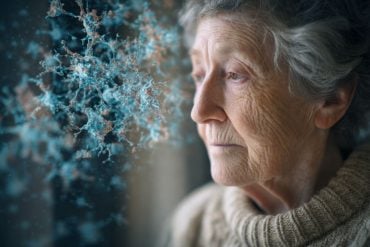Summary: New research shows that supplementing vasopressin levels in low-social rhesus monkeys improves social behavior and facial recognition without triggering aggression. The findings suggest vasopressin deficiency may underlie social difficulties seen in autism spectrum disorder (ASD).
Monkeys given vasopressin became more responsive to prosocial cues and better at remembering faces, critical skills often impaired in ASD. This work opens new avenues for precision therapies aimed at addressing core social deficits in autism rather than just managing symptoms.
Key Facts:
- Social Gains Without Aggression: Vasopressin improved prosocial behavior and facial memory without increasing aggression.
- Biological Link to ASD: Low-social monkeys naturally mirror some social impairments seen in humans with autism.
- Therapeutic Potential: Vasopressin supplementation could offer a future targeted treatment for core social deficits in ASD.
Source: Florida Institute of Technology
For years, Florida Tech’s Catherine Talbot, an assistant professor of psychology, has worked to understand the sociality of male rhesus monkeys and how low-social monkeys can serve as a model for humans with autism.
Her most recent findings show that replenishing a deficient hormone, vasopressin, helped the monkeys become more social without increasing their aggression—a discovery that could change autism treatment.

Currently, the Centers for Disease Control and Prevention reports that one in 36 children in the United States is affected by autism spectrum disorder (ASD). That’s an increase from one in 44 children reported in 2018.
Two FDA-approved treatments currently exist, Talbot said, but they only address associated symptoms, not the root of ASD. The boost in both prevalence and awareness of the disorder prompts the following question: What is the cause?
Some rhesus monkeys are naturally low-social, meaning they demonstrate poor social cognitive skills, while others are highly social.
Their individual variation in sociality is comparable to how human sociality varies, ranging from people we consider social butterflies to those who are not interested in social interactions, similar to some people diagnosed with ASD, Talbot said.
Her goal has been to understand how variations in biology and behavior influence social cognition.
In a research paper published in the journal PNAS, Talbot and researchers with Stanford, the University of California, Davis and the California National Primate Research Center explored vasopressin, a hormone that is known to contribute to mammalian social behavior, as a potential therapeutic treatment that may ultimately help people with autism better function in society.
Previous work from this research group had found that vasopressin levels are lower in their low-social rhesus monkey model, as well as in a select group of people with ASD.
Previous studies testing vasopressin in rodents had found that increased hormone levels caused more aggression. As a result, researchers warned against administering vasopressin as a treatment, Talbot said.
However, she argued that in those studies, vasopressin induced aggression in contexts where aggression is the socially appropriate response, such as guarding mates in their home territory, so the hormone may promote species-typical behavior.
She also noted that the previous studies tested vasopressin in “neurotypical” rodents, as opposed to animals with low-social tendencies.
“It may be that individuals with the lowest levels of vasopressin may benefit the most from it—that is the step forward toward precision medicine that we now need to study,” Talbot said.
In her latest paper, Talbot and her co-authors tested how low-social monkeys with low vasopressin levels and high autistic-like trait burden responded to vasopressin supplementation to make up for their natural deficiency. They administered the hormone through a nebulizer, into which the monkeys could opt.
For a few minutes each week, the monkeys voluntarily held their faces up to a nebulizer to receive their dose while sipping white grape juice—a favorite among the monkeys, Talbot said.
After administering the hormone and verifying that it increased vasopressin levels in the central nervous system, the researchers wanted to see how the monkeys responded to both affiliative and aggressive stimuli by showing them videos depicting these behaviors.
They also compared their ability to recognize and remember new objects and faces, which is another important social skill.
They found that normally low-social monkeys do not respond to social communication and were better at recognizing and remembering objects compared to faces, similar to some humans diagnosed with ASD. When the monkeys were given vasopressin, they began reciprocating affiliative, pro-social behaviors, but not aggression.
It also improved their facial recognition memory, making it equivalent to their recognition memory of objects.
In other words, vasopressin “rescued” low-social monkeys’ ability to respond prosocially to others and to remember new faces. The treatment was successful—vasopressin selectively improved the social cognition of these low-social monkeys.
“It was really exciting to see this come to fruition after pouring so much work into this project and overcoming so many challenges,” Talbot said of her findings.
One of Talbot’s co-authors has already begun translating this work to cohorts of autism patients. She expects more clinical trials to follow.
In the immediate future, Talbot is examining how other, more complex social cognitive abilities like theory of mind—the ability to take the perspective of another—may differ in low-social monkeys compared to more social monkeys and how this relates to their underlying biology.
Beyond that, Talbot hopes that they can target young monkeys who are at risk of developing social deficits related to autism for vasopressin treatment, to see if early intervention might help change their developmental trajectory and eventually translate this therapy to targeted human trials.
About this Autism and social neuroscience research news
Author: Madeline Taylor
Source: Florida Institute of Technology
Contact: Madeline Taylor – Florida Institute of Technology
Image: The image is credited to Neuroscience News
Original Research: Closed access.
“Nebulized vasopressin penetrates CSF and improves social cognition without inducing aggression in a rhesus monkey model of autism” by Catherine F. Talbot et al. PNAS
Abstract
Nebulized vasopressin penetrates CSF and improves social cognition without inducing aggression in a rhesus monkey model of autism
Low cerebrospinal (CSF) arginine vasopressin (AVP) concentration is a biomarker of social impairment in low-social monkeys and children with autism, suggesting that AVP administration may improve primate social functioning.
However, AVP administration also increases aggression, at least in “neurotypical” animals with intact AVP signaling.
Here, we tested the effects of a voluntary drug administration method in low-social male rhesus monkeys with high autistic-like trait burden.
Monkeys received nebulized AVP or placebo, using a within-subjects design.
Study 1 (N = 8) investigated the effects of AVP administration on social cognition in two tests comparing responses to social versus nonsocial stimuli. Test 1: Placebo-administered monkeys lacked face recognition memory, whereas face recognition memory was “rescued” following AVP administration.
In contrast, object recognition memory was intact and did not differ between administration conditions. Test 2: Placebo-administered monkeys did not respond to conspecific social communication cues, whereas following AVP administration, they reciprocated affiliative communication cues with species-typical affiliative responses.
Importantly, AVP administration did not increase aggressive responses to conspecific aggressive or affiliative overtures. Study 2 (N = 4) evaluated the pharmacokinetics of this administration method.
Following AVP nebulization, we observed a linear increase in cisternal CSF AVP levels, and a quadratic rise and fall in blood AVP levels.
These findings indicate that nebulized AVP likely penetrates the central nervous system, selectively promotes species-typical responses to social information, and does not induce aggression in low-social individuals.
Nebulized AVP therefore may hold promise for managing similar social symptoms in people with autism, particularly in very young or lower functioning individuals.







